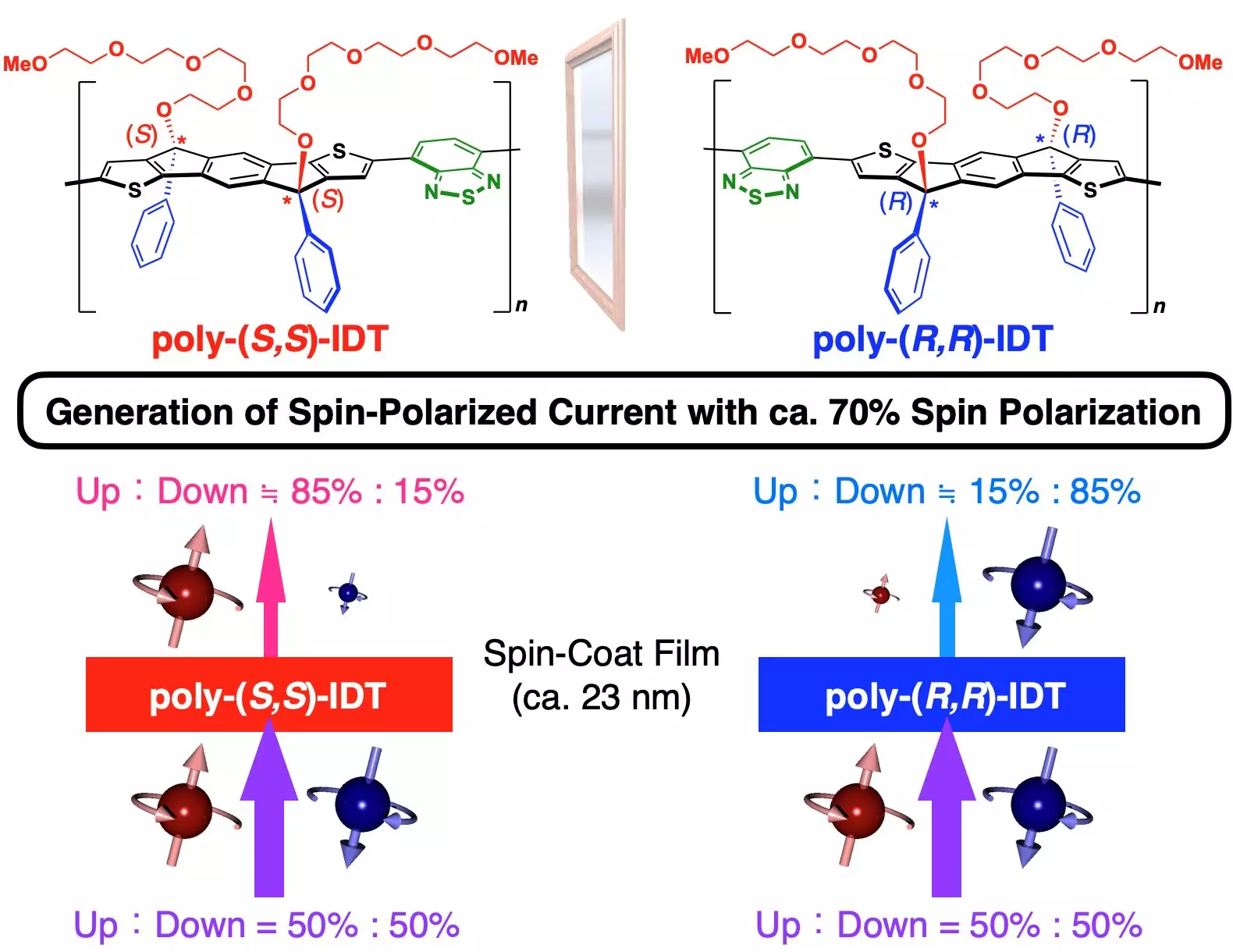Chirality plays a crucial role in the interaction of molecules, particularly in how they respond to light and electrical currents. This fascinating property, often likened to the distinction between left and right hands, gives rise to molecules that, despite being composed of the same atoms, can yield entirely different physical properties. Understanding chirality is paramount in the burgeoning field of spintronics, where researchers are exploring novel ways to utilize the spin of electrons alongside their charge for enhanced technological applications.
A recent study by researchers at Osaka University has made significant advancements in harnessing the power of chirality through the development of spin-coated chiral copolymer films. These films demonstrate strong spin polarization due to their unique composition and structure, enabling them to serve as effective spin filters. The concept of chirality-induced spin selectivity (CISS) is central to this research, as it highlights how the direction of electrical currents can be influenced by the chirality of molecules within these films.
The researchers succeeded in synthesizing chiral copolymers that utilize chiral indacenodithiophene (IDT) derivatives as monomer units. This innovative use of IDT not only introduces chirality to the polymers but also enhances their interaction with polarized currents. The implications of this research offer exciting possibilities in improving spintronic devices, which are still in their infancy but hold the promise of revolutionizing electronic technologies.
The experimental methodology employed by the Osaka University team is noteworthy. By employing atomic force microscopy, they assessed the CISS of the spin-coated films. They utilized a neodymium magnet to maintain the metal cantilever in either an up or down polarization while exposing the films to polarized currents. This setup allowed for a detailed analysis of how the films responded to different polarization directions.
The findings were promising—nearly 70% spin polarization was achieved, placing these copolymer films among the highest recorded for chiral polymers. This level of spin polarization equips the films with the ability to act as efficient spin filters, a crucial aspect of future spintronic applications.
The implications of this research are manifold. With the ability to easily prepare the IDT copolymer films through a straightforward spin-coating process, the Osaka team has significantly lowered the barriers to practical applications in spintronics. Prior methods of creating polymer films with high spin polarization involved complicated processes that could deter commercial viability.
As the excitement in the field of spintronics continues to grow, the potential application of these IDT copolymers reaches into advanced clean energy technologies, among other areas. By developing materials that allow for spin-polarized currents, researchers are not only advancing fundamental science but also contributing to the creation of more efficient electronic devices that could replace traditional technologies.
The exploration of chiral copolymer films and their unique properties represents a promising frontier in spintronics. The work being conducted at Osaka University highlights the intersection of chemistry and physics, paving the way for innovations that could fundamentally change the landscape of modern electronics.


Leave a Reply